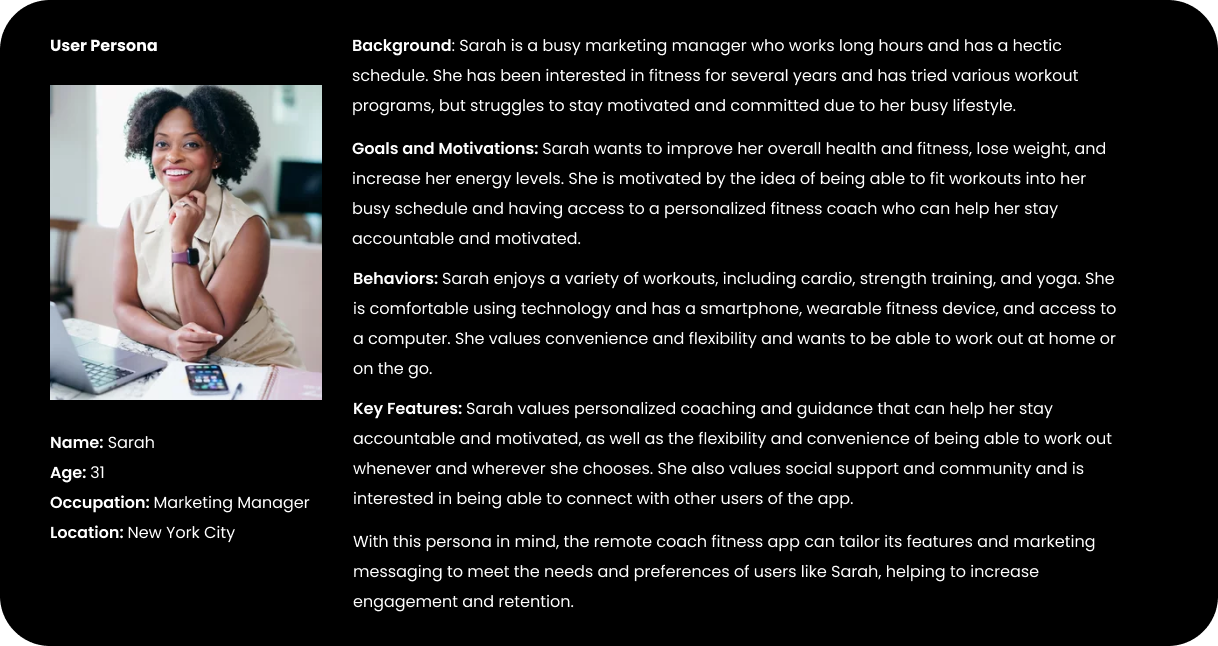Research
My research first centered around the
Competitive research and user surveys.
Competitors were analyzed, highlighting features like personalized workouts and nutrition tracking.
User surveys revealed that convenience, personalized guidance, and effective communication were key factors. Integration of workout tracking, nutrition management, and goal setting were also identified as important.
These insights guided the design and feature prioritization of Remotecoach, ensuring it meets user expectations and stands out in the competitive landscape.
Findings
- Users value personalized guidance and tailored fitness plans.
- Convenience and flexibility are top priorities for users.
- Accountability features, such as goal tracking, are highly sought after.
- Effective communication channels with coaches are essential.
- Integration of features like workout tracking and nutrition management is desired.
Getting Closer to User-Centered Design
Defining Key Differences in Motivations
Through Personas
Superficially, it may appear that everyone interested in a remote coach app has the same goal of saving time and achieving their fitness goals.
However, upon closer examination of user research, it became clear that there were divergent motivations among users. To address these differences, personas were created to represent distinct user types. Throughout the research and design process, two personas received primary focus.
One persona emphasized the importance of scrutinizing usage reports and data to make informed decisions about their coaching subscription. The other persona relied heavily on the app's browse, search, and filter functions to explore and choose from a variety of available coaches. These personas served as valuable reference points, ensuring that the development of the remote coach app catered to the diverse needs and preferences of its user base.







